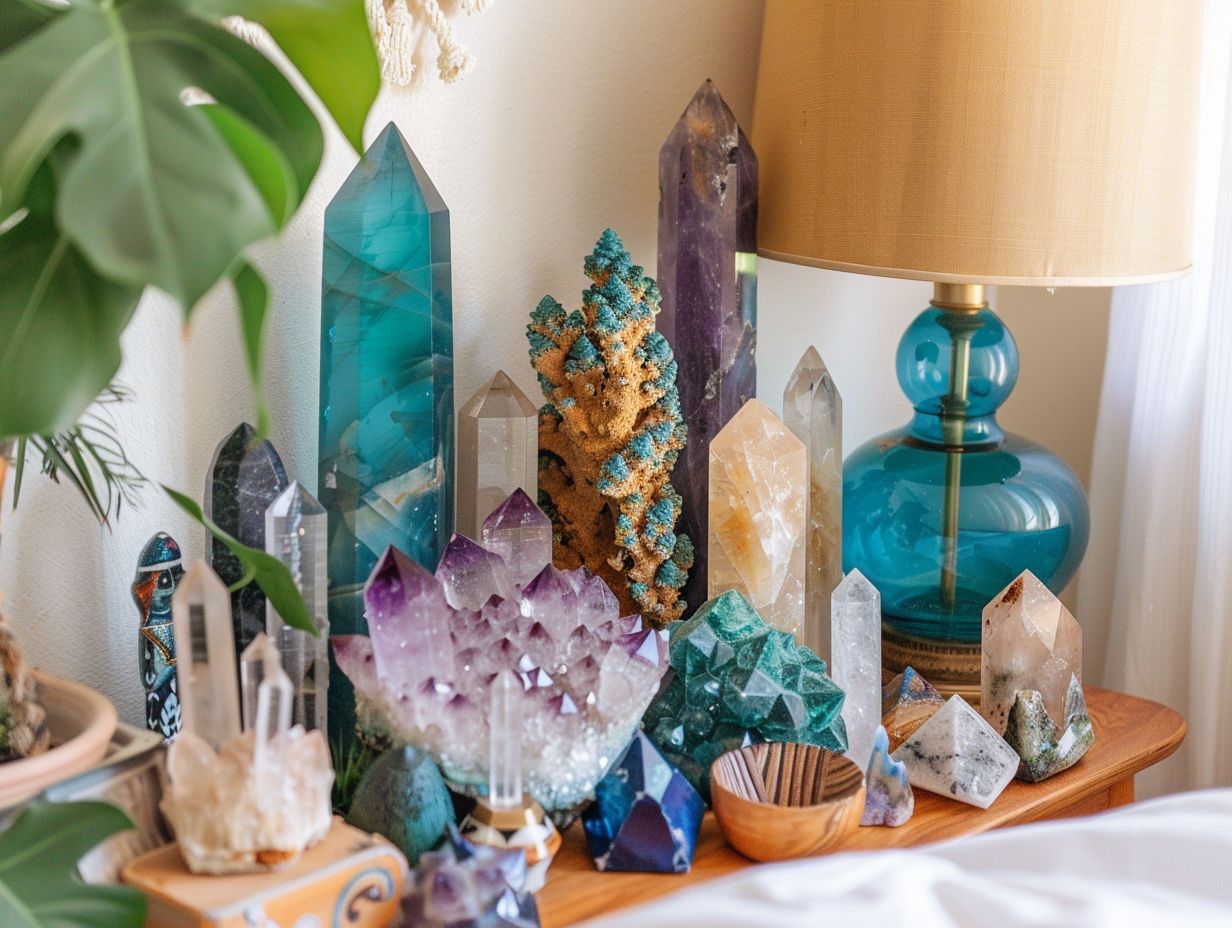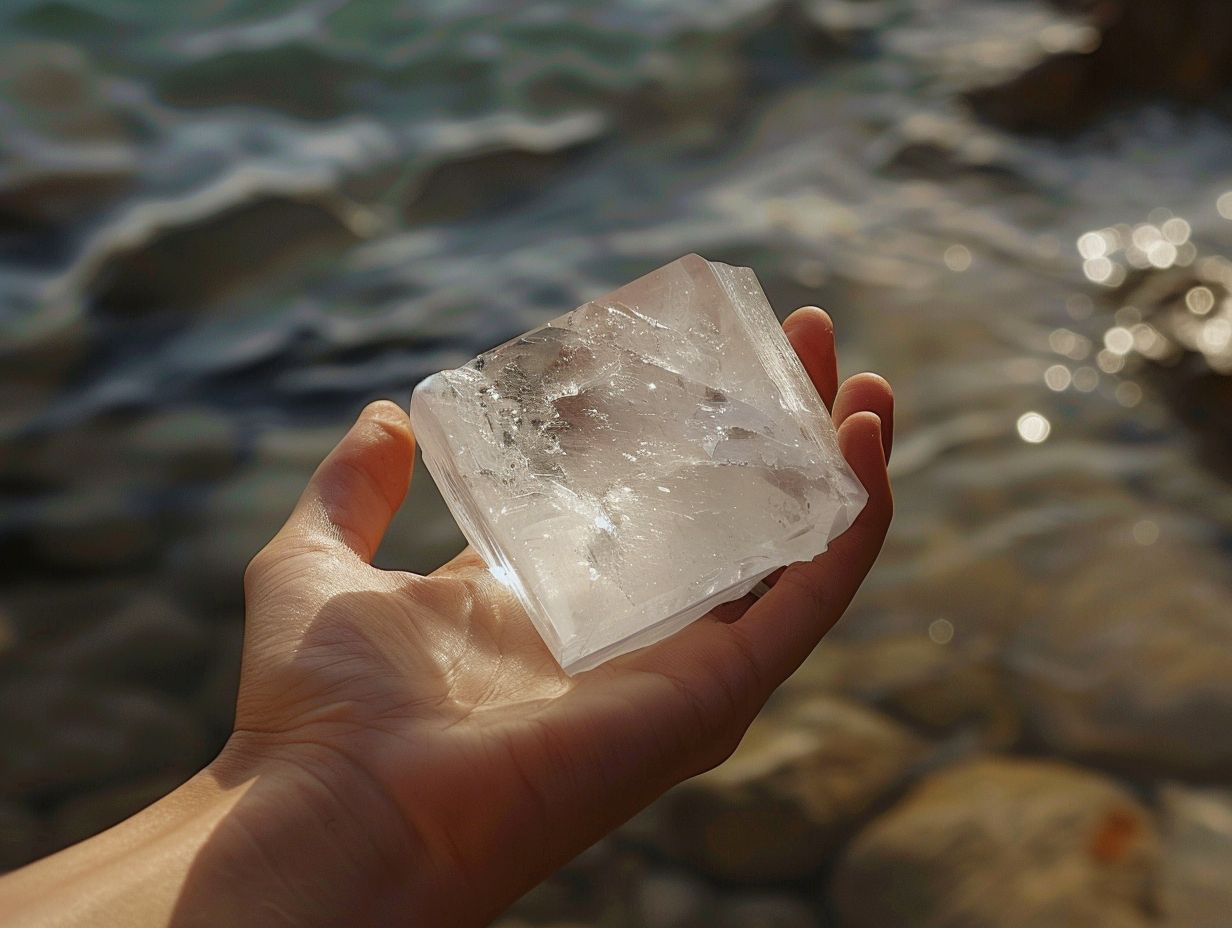
DIY Crystal Jewelry: Step-by-Step Tutorials
Looking to add a touch of sparkle to your jewelry collection? DIY crystal jewelry might just be the perfect solution!
We will walk you through the step-by-step process of creating your own stunning crystal jewelry pieces. From choosing the right crystals and beads to mastering the art of wire-wrapping, we’ve got you covered.
So grab your crystals, wire, and pliers, and let’s get crafting!
What Is DIY Crystal Jewelry?
DIY crystal jewelry involves creating unique and personalized accessories using gemstones, crystals, and various crafting techniques.
Many individuals are drawn to the allure of handmade jewelry for its one-of-a-kind appeal, offering a distinct touch to their ensemble. The artistry and creativity involved in jewelry making allow for the manifestation of personal style and expression, making each piece a true work of art.
Beyond mere aesthetic value, the use of gemstones and crystals not only adds beauty but also imbues each creation with symbolic meaning and healing properties. Embracing the trendiness and uniqueness of DIY crystal jewelry, enthusiasts can enjoy wearing pieces that resonate with their individuality.
Why Make Your Own Crystal Jewelry?
Making your own crystal jewelry allows for personalized and creative expression, offering unique decorative pieces and thoughtful gift ideas.
By crafting your own crystal jewelry, you can infuse each piece with your personal style and energy, ensuring that every necklace, bracelet, or pair of earrings is truly one-of-a-kind. The ability to customize the size, shape, and color of the crystals used enables you to tailor each creation to suit your individual taste and preferences. This hands-on approach not only unleashes your artistic talents but also allows you to experiment with different designs and techniques, resulting in stunning and fashion-forward accessories that reflect your creativity.
What Materials Do You Need For DIY Crystal Jewelry?
To create DIY crystal jewelry, you will need a variety of materials such as gemstones, beads, wires, and specialized tools for beading and wire wrapping.
Quality gemstones are essential for a stunning finished product, as they provide the foundation of your piece. In addition to gemstones, other supplies like clasps, jump rings, and jewelry pliers are necessary for assembling your creations.
When it comes to wire wrapping, tools like round-nose pliers, wire cutters, and a mandrel set are indispensable. Beading enthusiasts will benefit from having bead mats, bead boards, and various types of threading material at their disposal.
Experimenting with different techniques such as stringing, knotting, and wire weaving opens up a world of design possibilities in jewelry crafting.
Crystals
Selecting the right crystals is crucial in DIY crystal jewelry, considering factors such as crystal types, energy healing properties, chakra alignment, birthstone significance, and symbolic meanings.
Crystals come in a vast array of types, each with its unique characteristics and benefits. For example, amethyst is known for its calming properties, while rose quartz is often associated with love and emotional healing. Understanding the properties of different crystals allows individuals to tailor their jewelry pieces not only for aesthetic appeal but also for their specific energy healing needs.
Many believe that certain crystals can help balance the body’s chakras, the energy centers that run along the spine, promoting physical, emotional, and spiritual well-being. This connection between crystals and chakras is often utilized in spiritual practices like meditation and yoga to amplify the energy flow and restore harmony within the body.
Wire
Wire is a versatile material used in DIY crystal jewelry for wire wrapping techniques, creating loops, attaching pendants, and adding decorative embellishments to jewelry pieces.
Jewelry makers often opt for various gauges of wire, such as thin gauge for delicate wraps and thicker gauges for sturdier structures. Wire wrapping involves carefully encasing crystals or stones in wire to create beautiful designs. Looping methods, like simple loops and wrapped loops, are utilized to securely fasten components and to create intricate patterns. When attaching pendants or embellishments, wire is twisted, shaped, and manipulated to ensure a secure connection that enhances the overall aesthetic appeal of the jewelry piece.
Pliers
Pliers are essential tools in DIY crystal jewelry making, used for crimping, shaping wire, and assisting in the overall crafting process.
They play a crucial role in executing crimping techniques that ensure the secure fastening of clasps and beads in jewelry pieces, providing a professional finish.
Pliers are instrumental in shaping wire to create intricate designs and loops, adding a personalized touch to each handmade jewelry item.
Having high-quality pliers in your jewelry crafting supplies is vital as they offer precision and durability, enabling you to work with various materials confidently and achieve impeccable results.
Jewelry Findings
Jewelry findings are crucial components in DIY crystal jewelry, including clasps, beads, and various materials that allow for customization and secure assembly of jewelry pieces.
- Clasps play a significant role in providing the finishing touch to bracelets, necklaces, and anklets, serving as both functional and decorative elements.
- Beads, on the other hand, bring character and style to jewelry designs, enabling artisans to create unique patterns and textures that resonate with personal preferences.
- Quality findings are essential in ensuring that crystal jewelry remains intact and durable, especially considering the delicate nature of crystal beads.
- By selecting the right materials and findings, jewelry makers can elevate their creations from mere accessories to stunning pieces of art.
How To Make A Simple Wire-Wrapped Crystal Pendant?
Creating a wire-wrapped crystal pendant involves selecting the right crystal, preparing the wire, wrapping the crystal securely, and attaching a bail for easy wearing.
- Begin by choosing a crystal that speaks to you – whether it’s amethyst for calming energies or rose quartz for love and compassion.
- Next, select a sturdy wire like copper or silver that complements the crystal’s energy. Once your materials are in place, carefully wrap the wire around the crystal, ensuring it’s snug and secure. Use pliers to shape the wire neatly, creating a beautiful design. The key is to wrap the crystal tightly to prevent any movement.
- Attach a bail securely to the wire to easily slip it onto a chain or cord for wearing.
Choosing The Right Crystal
Selecting the right crystal is the initial step in creating a wire-wrapped pendant, considering factors such as crystal properties, energy healing benefits, and chakra associations.
Each crystal has its unique set of properties, ranging from soothing energies to enhancing creativity or promoting clarity of mind. For instance, amethyst is known for its calming and stress-relieving attributes, while citrine is associated with abundance and positivity. Crystals like rose quartz are often linked to love and healing energy, making them popular choices for heart chakra alignment. Understanding the significance of chakras in crystal selection is crucial as different crystals correspond to specific chakras, aiding in balancing the energy centers for overall well-being.
Preparing The Wire
Preparing the wire for wrapping involves straightening, cutting to size, and potentially oxidizing to achieve the desired effect in DIY crystal jewelry making.
Straightening the wire is a crucial step as it ensures that the wire is free from kinks or bends, allowing it to neatly encase the crystals.
Cutting the wire to the right size is important for achieving a polished look in your jewelry pieces.
Oxidation techniques can be used to create unique finishes on the wire, adding a touch of character to your creations.
By carefully following these steps, you can elevate the overall aesthetic of your DIY crystal jewelry.
Wrapping The Crystal
Wrapping the crystal securely with wire requires mastering various techniques, ensuring a snug fit and potential addition of decorative embellishments for a personalized touch.
One popular technique for wire wrapping involves creating a frame around the crystal, carefully wrapping the wire to cradle it securely.
Another method is the coiling technique, where the wire is twisted and wound around the crystal to hold it in place. A snug fit is crucial to prevent the crystal from shifting or falling out.
To enhance the pendant, consider adding beads, charms, or other embellishments that complement the crystal and personalize the design. By combining these techniques and adding creative embellishments, you can create a unique and eye-catching crystal pendant.
Attaching A Bail
Attaching a bail to the wire-wrapped crystal pendant allows for easy hanging on chains or cords, requiring proper techniques to secure the bail and ensure jewelry durability.
Selecting the right type of bail is crucial to maintaining the overall aesthetic and functionality of the pendant. A properly attached bail not only enhances the design of the piece but also ensures that the pendant stays securely in place while being worn. By using appropriate techniques when attaching the bail, such as soldering or using strong adhesive, you can increase the durability of the jewelry finding. Considering factors like the size and weight of the pendant when choosing a bail will contribute to the ease of wearing and prevent any damage or loss of the pendant.
How To Make A Beaded Crystal Bracelet?
- Crafting a beaded crystal bracelet involves selecting the right crystals and beads, measuring and cutting wire, stringing the beads in desired patterns, and adding a clasp for closure.
- Once you have chosen the crystals and beads that resonate with your style and intention, it’s time to dive into the intricate process of wire cutting. Carefully measuring and cutting the wire to the desired length is crucial to ensure a proper fit for your bracelet.
- Next, comes the creative part – stringing the beads onto the wire, allowing you to unleash your artistic flair by arranging them in unique and visually appealing patterns.
- The final touch is attaching a clasp, ensuring both a secure fit and an elegant closure for your stunning crystal bracelet.
Choosing The Right Crystals And Beads
Selecting the ideal crystals and beads is essential for a beaded bracelet, considering factors like color combinations, crystal types, and overall design aesthetics.
The choice of crystals and beads can greatly influence the overall look and feel of the bracelet. For instance, different crystal types such as Swarovski crystals, Czech glass beads, or natural gemstones each bring their unique qualities to the design.
When it comes to color combinations, harmonizing shades or creating striking contrasts can elevate the bracelet’s visual appeal. By carefully selecting crystals and beads that complement each other, artisans can create pieces that convey specific moods or meanings, making each bracelet a truly distinctive accessory.
Measuring And Cutting The Wire
Accurate wire measurements and precise cutting are crucial for a well-crafted beaded bracelet, ensuring proper fit and secure bead attachment in DIY crystal jewelry making.
Using the right tools, such as wire cutters and measuring tools, can help achieve the desired length for the bracelet. Proper measurement and cutting also play a key role in achieving symmetry and balance in the design, giving the bracelet a professional finish.
Secure bead attachment is essential to prevent beads from coming loose and ensures the durability of the jewelry piece. By mastering these fundamental techniques, jewelry makers can create stunning bracelets that not only look beautiful but also stand the test of time.
Stringing The Beads And Crystals
Stringing the beads and crystals in desired patterns is a creative process in making a beaded bracelet, allowing for unique designs and personalized touches.
Exploring different techniques such as using spacer beads, incorporating charms, or mixing various sizes and shapes of beads can elevate the design of the bracelet. By experimenting with color combinations and bead placement, you can craft a piece that reflects your style and personality.
The rhythmic motion of threading beads onto the string can be meditative, offering a relaxing and therapeutic experience. Embrace your creativity and let your imagination guide you as you string together beads and crystals to create stunning bracelets with a personal touch.
Adding A Clasp
Adding a clasp to the beaded crystal bracelet completes the piece, providing a secure closure and functional element with various techniques for attaching the clasp.
The clasp addition in bracelet making is crucial not only for aesthetic purposes but also for practical reasons. It ensures that the bracelet stays securely on the wrist, preventing accidental loss.
When attaching clasps, it is important to consider the durability and ease of wear. Techniques such as using jump rings, crimp beads, or wire wrapping can help create a strong connection between the clasp and the bracelet. By mastering these techniques, jewelry makers can enhance the overall quality and longevity of their creations.
What Are Some Tips And Tricks For DIY Crystal Jewelry Making?
Enhance your DIY crystal jewelry making skills with valuable tips and tricks suitable for beginners, intermediate, and advanced crafters to elevate your crafting process.
- For beginners, start with simple designs like beaded bracelets or basic wire wrapping before moving on to more complex projects.
- Intermediate crafters can explore incorporating different crystal shapes and colors, experimenting with layering techniques, and trying out advanced wire weaving patterns.
- Advanced crafters may want to delve into resin casting to create unique crystal settings, mastering intricate chainmaille designs, or even venturing into the art of soldering for metalwork components.
No matter your skill level, always practice precision when measuring and cutting materials, and don’t shy away from seeking inspiration from nature or fashion trends for creative enhancements in your pieces.




No Comments